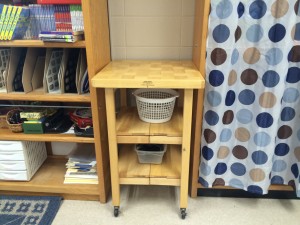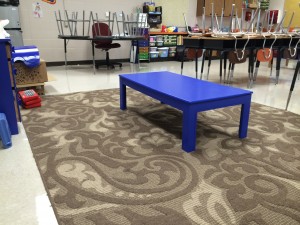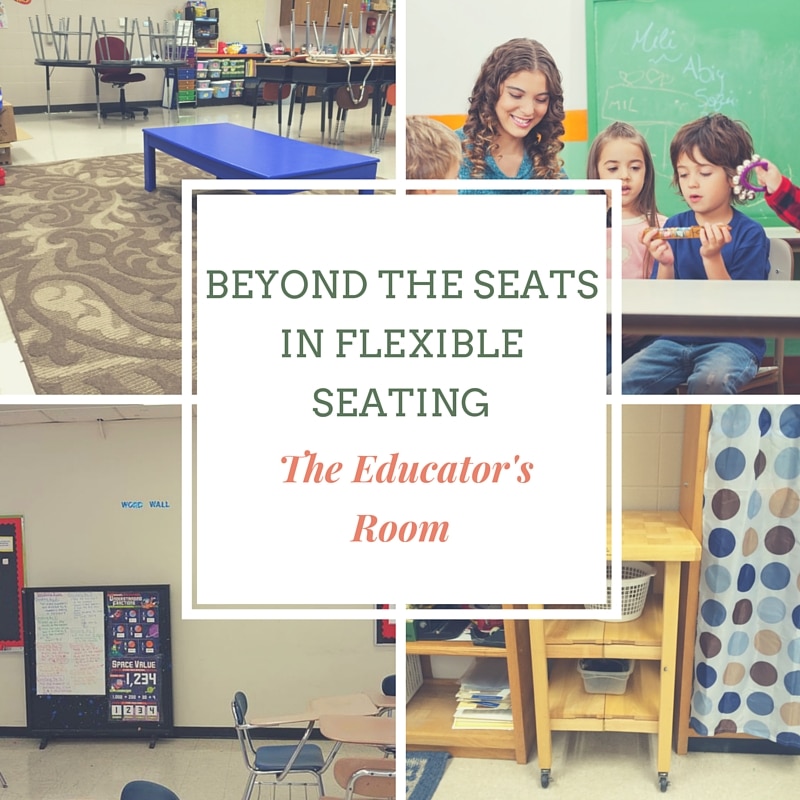Without change, we exist in a stagnant environment. Learning is about persistence, failure, and change. Each summer there are buzz words that emerge and ideas for teachers to think about. However, not everything fits into a neat little package. There is not one boxed program, method, or idea that will work in every classroom. Teaching is an art and science and such a personal profession that you bring yourself into what you do as well. If you are looking to make a change this year, with flexible seating in your classroom, there are a few things to consider as you start.
It does not have to be sink or swim!
There are examples on the web of picturesque classrooms modeled after quaint little coffee houses. All desks and any resemblance of a traditional classroom have been stripped and replaced with couches, yoga balls, carpets and coffee tables. Last year when I brought flexible seating into my classroom I had enough “seats” (literally chairs) at desks or tables for all of the students enrolled in my class. I kept 10 traditional desks and added two tables as well as a coffee table and a kitchen island for standing work. When you start this process you can go slowly. You can add pieces that you know your students will use and need to be better learners. You don’t have to jump in the deep end without a safety. It is OK to learn as you go and to go slowly.
Stuff, stuff and more stuff!
Kids come with stuff. They bring the supplies, all boldly marked, listed from the classroom supply list. If you have removed your desks, that stuff still needs to go somewhere. Depending on your teaching style, you can set up your classroom to have students use shared supplies putting everything in tubs and crates. I collected big items (Clorox wipes, glue, and extra dry erase markers) and had students keep their pencil boxes with all their other supplies. These were carried around with them and stored in their mailboxes at night. I also used magazine holders, one for each student, and had them on the top of a bookshelf for papers and folders.

Any textbooks were stored collectively on a bookshelf. Your personal organization style will determine what works best in your classroom. There is also a benefit of movement added with flexible seating. When you transition subjects, students will need to get up and get the new supplies as they are no longer stored in their desk. This may take a couple minutes longer, but it is a great time to add in a brain break and let students move around a bit. When you decide to bring flexible seating into your classroom, take the time to think about where all of the stuff will go also.
Hey, that’s my space!
Classroom management is the second huge piece, along with organization, that completes the flexible seating puzzle. As with anything, you will want to set clear expectations and model the expected behaviors for students. Using a standing area is different than using a traditional desk. Think through what you are comfortable with (Can a student wander while at the standing table? Can a student lie down on the floor to work?) and what would stop others from learning. You will want to monitor limited spaces and keep a record of who uses them or assign students a day to use special, limited items. Keep an open dialogue going about what students notice about their learning. What helps them (space, areas, people, music, lighting, etc.) and what stops them? Encourage all students to try all spots. They may find something that surprises them. Also, have them think about where they like to do homework at home. You may need to increase or decrease areas depending on the needs of your class. And with any good classroom management, after you have stated your expectations if a student is doing something to stop learning you move them. They can try again tomorrow.
 At the beginning of the year, I had 10 desks and 2 large tables. I also had one standing table, a bench, 1 seat and 1 coffee table. Students picked their seat at the beginning of the week and marked it with their desk tag. They kept their spot for a week and then on Friday they did an exit ticket to tell me what helped them and what stopped them in their learning. We also talked a lot in our setting up a community about paying attention to what helps and stops your work. Depending on your teaching style and the activity, you may need students to be in their workspace, in a small group or at one central location (a large rug works well) for learning. If you lecture, start them on the carpet so they can see you and the board. If you are having a discussion, students need to be where they can talk with peers and see the group. Again, set your expectations for what this looks like and teach those to the group.
At the beginning of the year, I had 10 desks and 2 large tables. I also had one standing table, a bench, 1 seat and 1 coffee table. Students picked their seat at the beginning of the week and marked it with their desk tag. They kept their spot for a week and then on Friday they did an exit ticket to tell me what helped them and what stopped them in their learning. We also talked a lot in our setting up a community about paying attention to what helps and stops your work. Depending on your teaching style and the activity, you may need students to be in their workspace, in a small group or at one central location (a large rug works well) for learning. If you lecture, start them on the carpet so they can see you and the board. If you are having a discussion, students need to be where they can talk with peers and see the group. Again, set your expectations for what this looks like and teach those to the group.
Test taking will also need to be thought through as you will want to provide private spaces for all students. Personally, I got a bunch of folders so they could each have 2 during tests to make private office spaces. Flexible seating does not mean your classroom becomes a free-for-all. This is simply a way to provide more tools to students to increase their time on task and their learning.
Think about your strengths and weaknesses in organization and classroom management. Why do you want to add flexible seating to your environment? It should strengthen the tools your students have to use. Consider starting small and gather items to compliment what you are already doing well in your room. Talk with your students and offer them options for personal comfort in the classroom. There are no magic potions, but change can be a wonderful thing.
Flexible seating is an empowering way to teach. Just like anything in the classroom, set expectations and be firm in the beginning. Move into this environmental change with purpose and your students will benefit from having different options in their learning.








Test Comment